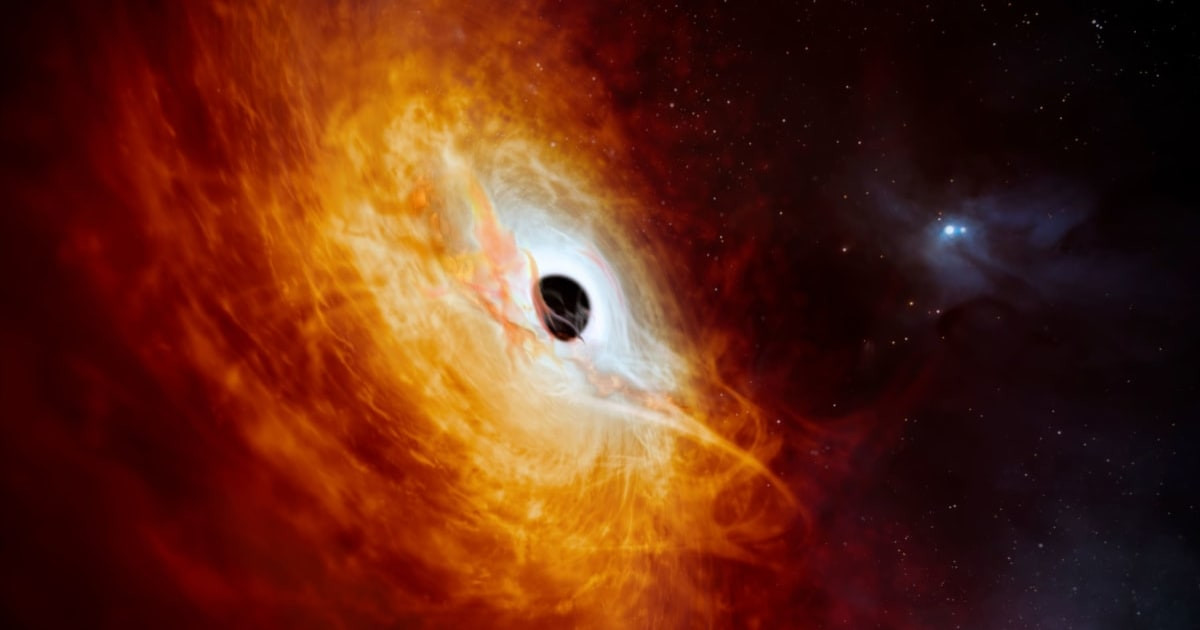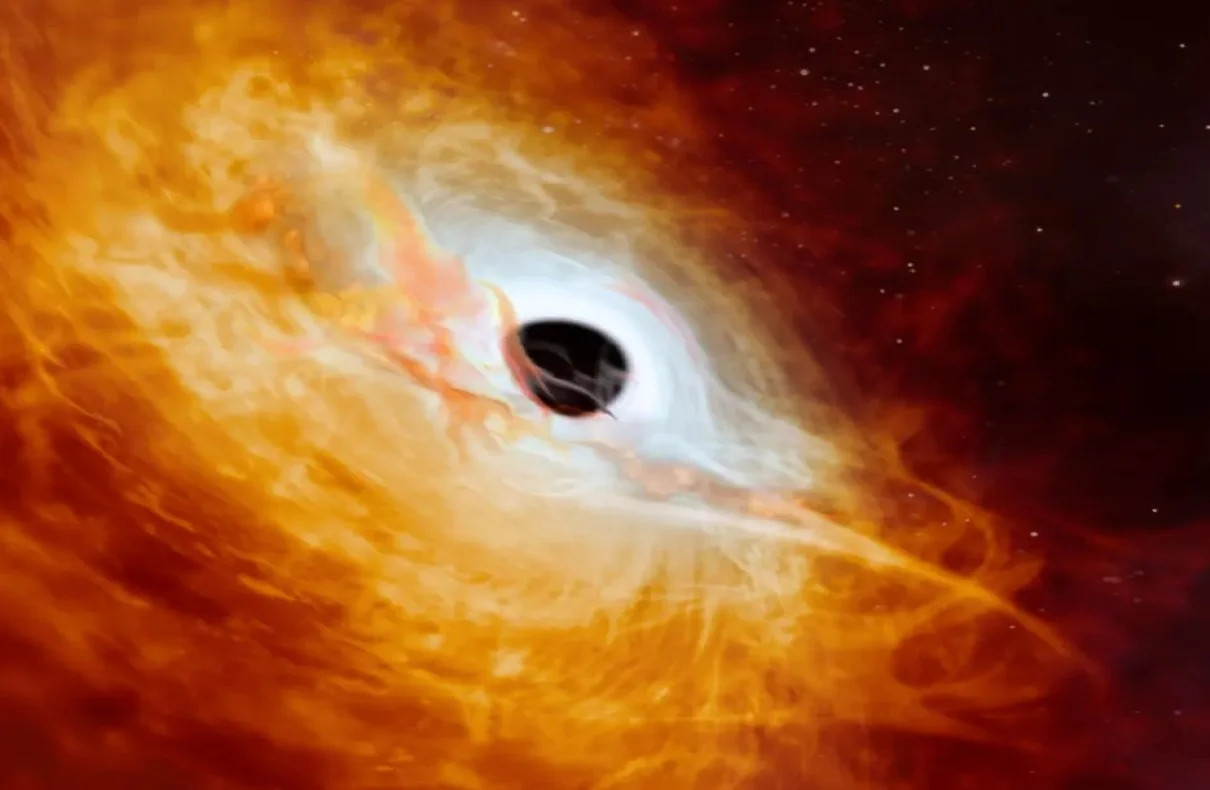Astronomers have identified the brightest object ever observed in the universe, a quasar named J0529-4351. This quasar is 500 trillion times brighter than the Sun, setting a new record for celestial luminosity.
The quasar was detected using the European Southern Observatory's Very Large Telescope (VLT) in Chile. Its incredible brightness is powered by a supermassive black hole at its core.
The black hole at the heart of J0529-4351 is growing at an unprecedented rate, consuming the mass equivalent of one Sun per day. With a mass of 17 billion Suns, it is the fastest-growing black hole ever discovered.
Despite its brightness, J0529-4351 was initially misclassified as a star in earlier sky surveys due to its extreme luminosity. It had been visible since 1980 but was only correctly identified as a quasar in recent years.
Discovering such bright quasars is difficult, as they can be mistaken for nearby stars by automated analysis systems. The European Space Agency's Gaia satellite initially overlooked J0529-4351 for this reason.
This discovery opens new possibilities for studying the early universe, including the formation of supermassive black holes and their host galaxies. The quasar will be a key target for future observations using advanced instruments like the GRAVITY+ upgrade on ESO's VLT Interferometer and the upcoming Extremely Large Telescope.
The Most Luminous Object Ever Observed
Astronomers have discovered the brightest object ever observed in the universe. Using the European Southern Observatory's (ESO) Very Large Telescope (VLT), astronomers identified a quasar described as the “brightest of its kind” and the “most luminous object ever observed,” according to a statement.
Quasars are the extremely bright cores of galaxies, powered by supermassive black holes at their centres. As gas and dust fall into these black holes, they release electromagnetic radiation, producing intense light, as reported by Newsweek.
This newly discovered quasar is not only record-breaking in brightness but is also rapidly growing, a characteristic of the brightest quasars in the galaxy. The study, published in Nature Astronomy, notes that this quasar, named J0529-4351, is growing at a rate equivalent to one sun per day and is over 500 trillion times brighter than the sun.
A Glimpse into the Early Universe
The lead researcher described the quasar to Newsweek as “possibly the most hellish place in the Universe,” citing its fast-moving clouds, extreme temperatures, and massive cosmic lightning bolts. Despite these harsh conditions, the light emitted by this quasar is extraordinary.
“We have discovered the fastest-growing black hole known to date. It has a mass of 17 billion suns and consumes just over a sun per day. This makes it the most luminous object in the known universe,” said Christian Wolf, an astronomer at the Australian National University (ANU) and lead author of the study.
Astronomers report that this quasar is so distant from Earth that its light has taken over 12 billion years to reach us. To observers on Earth, quasars appear similar to stars.
“All this light comes from a hot accretion disc that measures seven light-years in diameter —this must be the largest accretion disc in the Universe,” ANU PhD student and co-author Samuel Lai added.
Hiding in Plain Sight
Though the quasar has been visible since 1980, astronomers only recently recognized it as such. Initially, there was debate about whether this object was a quasar at all, as it was too bright to fit the usual profile.
Using a 2.3-meter telescope at Siding Spring Observatory in Australia, astronomers confirmed it was indeed a quasar. Later, with the help of ESO's VLT, they discovered that it was the brightest quasar ever found. This telescope is specifically designed to measure the size of black holes, even at great distances.
“It is a surprise that it has remained unknown when we already know about a million less impressive quasars. It has literally been staring us in the face until now,” said co-author Christopher Onken, an astronomer at ANU.
A Window into the Past
Studying quasars and black holes is crucial for understanding the early universe, as they provide valuable insights into how it formed and how galaxies evolved.
“Personally, I simply like the chase,” Wolf said. “For a few minutes a day, I get to feel like a child again, playing treasure hunt, and now I bring everything to the table that I have learned since.”
The discovery of J0529-4351 serves as a testament to the remarkable advancements in astronomical observation and the never-ending quest for knowledge about the universe. This luminous quasar stands as a beacon from the early universe, illuminating the mysteries of cosmic evolution and inspiring future generations of astronomers.
This quasar, located so far from Earth that its light took over 12 billion years to reach us, is a testament to the vastness and mystery of the cosmos. Its brightness is a reminder of the incredible energy and power that exists in the universe, and its discovery provides valuable insights into the early universe. As we continue to explore the universe, we can expect to find even more incredible objects that challenge our understanding of the cosmos.



















